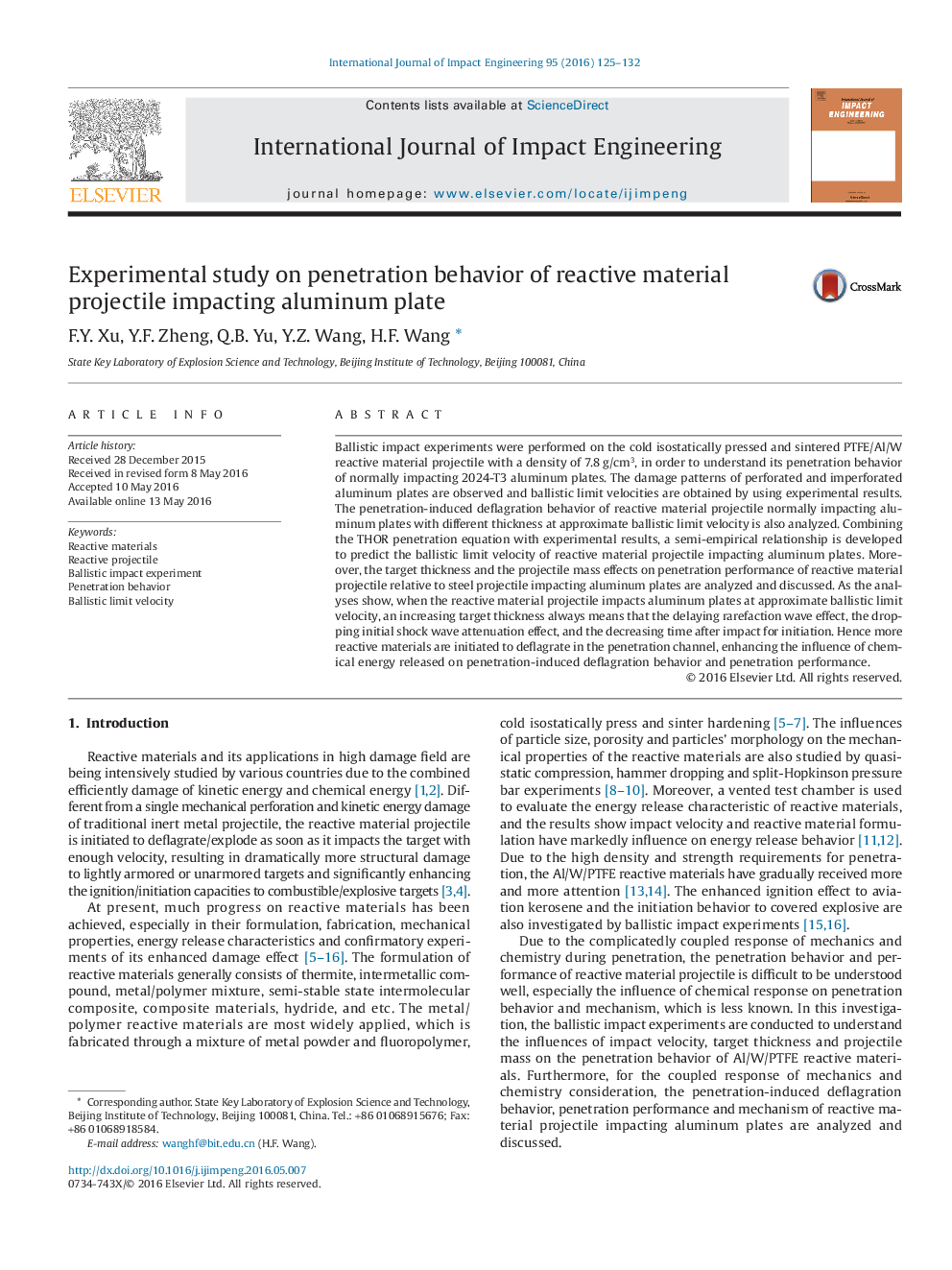| Article ID | Journal | Published Year | Pages | File Type |
|---|---|---|---|---|
| 776308 | International Journal of Impact Engineering | 2016 | 8 Pages |
•A semi-empirical relationship is developed to predict the ballistic limit velocity of reactive projectile penetrating aluminum plates.•Penetration capacity of reactive projectile relative to steel projectile presents an increasing trend with an increasing target thickness or a decreasing projectile mass.•Chemical energy release may decrease the ballistic limit velocity due to the increase of deflagration pressure in penetration channel.•Petalling and plugging damage patterns are formed on perforated aluminum plates impacted by cylindrical reactive projectile.
Ballistic impact experiments were performed on the cold isostatically pressed and sintered PTFE/Al/W reactive material projectile with a density of 7.8 g/cm3, in order to understand its penetration behavior of normally impacting 2024-T3 aluminum plates. The damage patterns of perforated and imperforated aluminum plates are observed and ballistic limit velocities are obtained by using experimental results. The penetration-induced deflagration behavior of reactive material projectile normally impacting aluminum plates with different thickness at approximate ballistic limit velocity is also analyzed. Combining the THOR penetration equation with experimental results, a semi-empirical relationship is developed to predict the ballistic limit velocity of reactive material projectile impacting aluminum plates. Moreover, the target thickness and the projectile mass effects on penetration performance of reactive material projectile relative to steel projectile impacting aluminum plates are analyzed and discussed. As the analyses show, when the reactive material projectile impacts aluminum plates at approximate ballistic limit velocity, an increasing target thickness always means that the delaying rarefaction wave effect, the dropping initial shock wave attenuation effect, and the decreasing time after impact for initiation. Hence more reactive materials are initiated to deflagrate in the penetration channel, enhancing the influence of chemical energy released on penetration-induced deflagration behavior and penetration performance.
